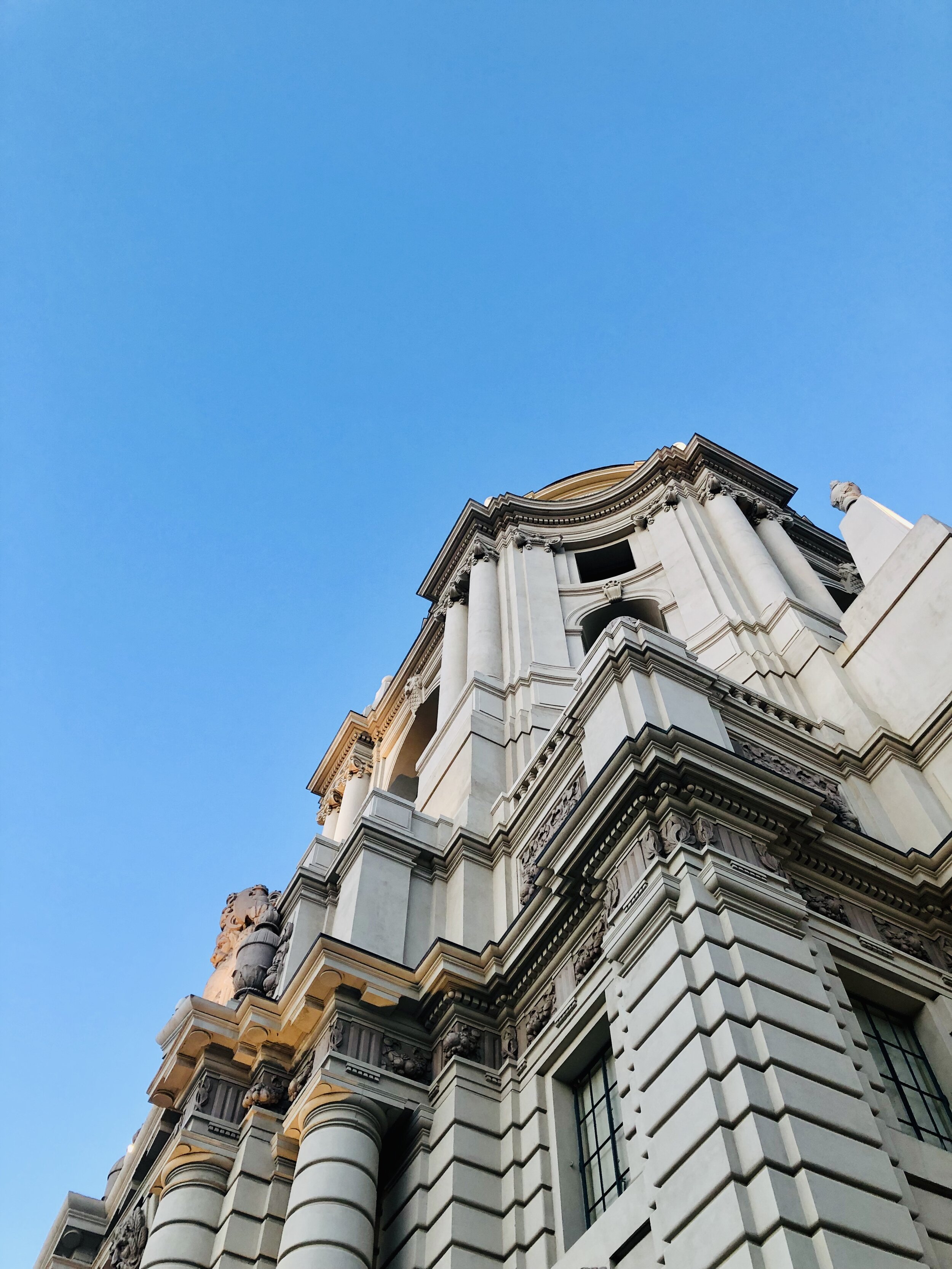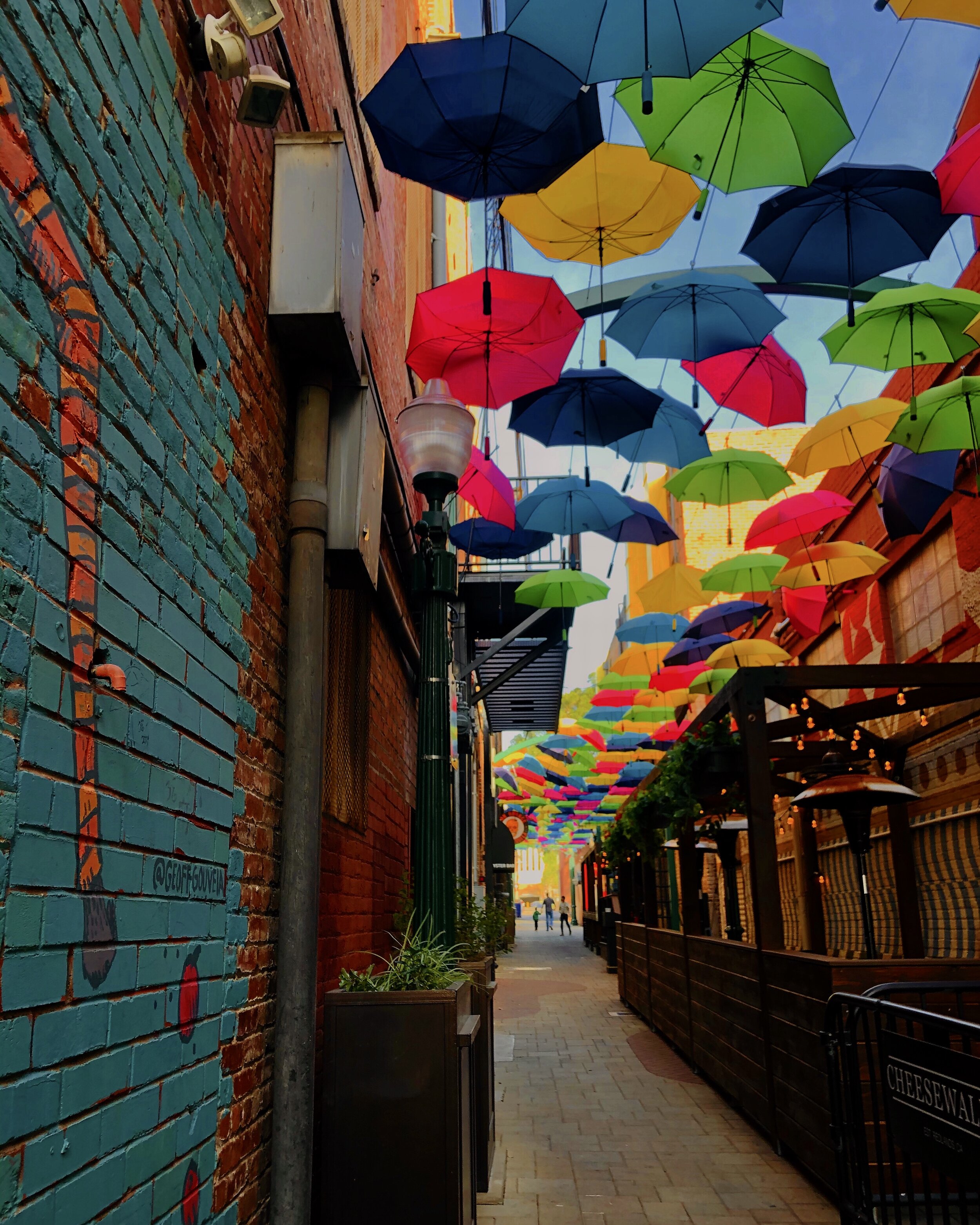AMALIA SOSA
Portrait courtesy of Amalia Sosa.
Amalia Sosa is currently a fourth-year student at California Baptist University (CBU) pursuing her master’s in architecture. She is a first-generation college student, who is paving her way through her education. She transferred from Citrus College and began studying at CBU in Fall 2019. She is currently the Events Coordinator for CBU NOMAS, a school chapter for the National Organization of Minority Architecture Students. She has become passionate about designing spaces where communities can gather and celebrate one another. She aspires to integrate the importance of public spaces to create a diverse community through architectural design. Amalia enjoys model-making, hand sketches, photography, and music.
Uncovering the Journey to Architecture
What inspired you to study architecture?
In my first year after high school, I was indecisive about studying interior design, psychology, stage design, and theater production. At the same time, I spent a lot of my time cake decorating, visiting new places, taking photographs, and sketching. So, when I enrolled in my first architecture studio at Citrus College, I discovered that architecture was a career that embraced many of the things I love to do. I was inspired to keep studying architecture when I realized the good things I can do with it, such as affordable housing, design for healthy and productive environments, reduce negative impacts on the environment, and public space design for communities. I began to enjoy model making and sketching, it is so important especially in the early design stages. I love how intricate and creative this process is. It is beautiful and exciting to see how a project develops from a conceptual idea to a physical building people visit and experience.
Basswood model of live/work project. Image courtesy of Amalia Sosa.
Name a woman architect who most influenced you as an emerging professional?
A woman architect who most influenced me as an emerging professional was my professor who is also an architect from Citrus College. She was the only woman professor I had for my drafting and 3D modeling classes in the early stages of my education. During my first drafting class I ended up being the only woman in a class of 12. She brought that to my attention to motivate me and allowed me to see it as a positive thing. My professor made me realize that it was a virtue. She told me to work hard, try my best and to never feel like I did not belong because it begins with one person to make a change. For me it was good to hear that from her, because I was going through imposter syndrome, a phenomenon many people experience. She held me accountable and had high expectations for my work throughout the four classes I took with her. There was one semester where I took a Maya modeling class and I remember she told me halfway through the semester to look around the class, because once again, I was the only female left. I can say now that Professor Au gave me the reassurance and motivation to continue my path in architecture.
Site Analysis model of live/work project. Image courtesy of Amalia Sosa.
Name a favorite project completed by a woman Architect. Why is it your favorite?
A favorite project completed by a woman Architect is the Writers Theatre by Jeanne and Studio Gang located in Glencoe, Illinois. I personally love this project because of its considerations to its site adjacencies and community. On both sides of this theater are parks, therefore the canopy walk and façade details truly ties everything together, it gives the sensation that you are walking through nature. The journey they went through to use the type of wood for the façade shows the beauty of architecture, proving there is always a process that takes time and adds value to the finished product. I have always enjoyed the use of wood and concrete on buildings when it speaks coherently to the surrounding site. Gang connected the theater environment, urban life, and community with this project. The type of performances this theater host are shows that allow intimacy between the actors and the audience. This is important because it is unique and special to experience community whether you are in the exterior or interior spaces of the theatre.
Renderings and Section of live/work project. Image courtesy of Amalia Sosa.
Are there any organizations that helped you grow in architecture? How did they help you grow?
There have been two organizations that helped me grow in architecture. The first one was ASEA, American Society of Engineers and Architects and the second one is SoCal NOMA, National Organization of Minority Architects. I learned about ASEA when I was in Citrus College, it was one of the school clubs that I signed up for and it introduced me to other college students and professionals in the field of Architecture and Engineering. It helped me grow by allowing me to begin networking and getting out of my comfort zone. I also learned the importance of creating relationships that support you through architecture school. The organization had fun events that brought both architecture and engineering students together. Currently, I am part of CBU NOMAS, which is one of the school chapters for SoCal NOMA. I am the events coordinator of our school club. This has been a great organization because being a minority myself, it is nice to see BIPOC succeeding in the career I am pursuing. NOMA treats everyone like family, and you can truly feel the support of professionals who seek to support the education and careers of individuals. This organization has helped me grow by seeing the beauty of having different cultures and fully embracing it. They are very active and persistent in the fight to raise BIPOC voices in the field of architecture. SoCal NOMA is focused on bringing diversity, equity and inclusion to schools and workplaces which gives me hope for future generations.
Experiential perspective sketches of Redlands Community Theatre project. Image courtesy of Amalia Sosa.
Tell us about your passion with art and photography. How does your artistic and photographic skills help you become a better designer?
I grew up in a family that appreciates and cultivates creativity. Being surrounded by family members who are in touch with their creative side helped me find mine. In my family there are painters, musicians, carpenters, builders, and pastry chefs. The newer generation, including myself have enjoyed photography. My passion for the arts led me to explore various interests of mine. I enjoy painting, cake decorating, sketching, photography and playing the guitar. These hobbies of mine have truly helped me become a better designer by being able to express myself visually, knowing about the importance of rhythm and scale, and capturing the small intimate details of my surroundings. I love being able to express myself visually because I truly believe that a photo is worth a thousand words. When I draw experiential sketches, I submerge myself in the space and try to show what the human experience would be. It makes me think of the small little details of the space and pushes my vision as a designer.
Experiential perspective of NOMA Student Design Competition 2020. Image courtesy of Amalia Sosa.
As you reflect on the past year, what did you discover as your biggest strengths?
This past year was difficult to say the least as a student and as a Mexican American. I was beginning my second semester at California Baptist University and I was getting comfortable with my new school setting. When you are a transfer student there are a lot of adjustments and adaptations you need to make. When we all went to remote learning due to Covid-19, it was an abrupt change that no one was expecting, this led me to discover my first strength which is being persistent. I realized that being able to succeed no matter what life throws at you is a strength. It means that I can withstand any change that comes my way and keep track of my vision. As I was going through these personal changes, we as a country were raising our voices to stop racial injustices and systemic racism through the current Black Lives Matter movement. This is the time for us to come together and address the issues we have in our nation. With that said, the second biggest strength I discovered this past year is the power of using my voice. When you use your voice and speak up about injustices with peers, friends, and society you raise awareness to issues that others are facing but are not able to speak up about it. You never know who you can help when you decide to raise your voice and act.
Street rendering of an Elder Care Facility with Commercial floor located in Riverside. Image courtesy of Amalia Sosa.
If you were able to talk to your younger self, what would you say?
At a young age, I would dream about being an architect and I would spend hours using 8.5 x 11 in. papers creating a floorplan of what I imagined my dream house would be. That was a forgotten dream as I grew up because I thought I would not be capable of achieving because when I would think of architecture, the first thing that came to my mind was how male dominated this profession was and I did not know of many Hispanic and Latinx women who were in that field. If I could talk to my younger self, I would tell her to dream big, dive deeply into your passion and do not hold back. It is better to try and learn from it rather than being left wondering what could have been, either way time passes, and small steps are better than none. I would also tell my younger self that being a first-generation college student is a privilege and instead of fearing whether you fit in or not you should keep your head held high and be confident that you belong wherever you step.
Oil on canvas, a painting inspired from a photograph. Image courtesy of Amalia Sosa.
What would you want to say to the next generation of aspiring women architects?
What I would say to the next generation of aspiring women architects would be to follow your dream and work towards making it a reality. In this career of architecture, it is important to go out and find a support system, whether it is a group of friends, a mentor, or professor. Being the only woman in the room is a virtue and you should be proud, do not hold back. Use your voice, be present and let your work shine and represent who you are. Do not be afraid to go to a new setting and meet new people, you never know what opportunities may be presented to you when you give yourself a chance. Lastly, if you have the will power and use your strengths you will find a way to succeed in this career.
Left: Pasadena City Hall.
Right: Alley located in Downtown Redlands.
Images courtesy of Amalia Sosa.
In terms of rising concerns and problems (in the architectural profession) over the past year, what is one change that you wish saw would happen and it did not?
In the architectural profession, there is an opportunity to see more BIPOC in both educational and work atmospheres.
Summer 2020, Black Lives Matter peaceful protest. Image courtesy of Amalia Sosa.












